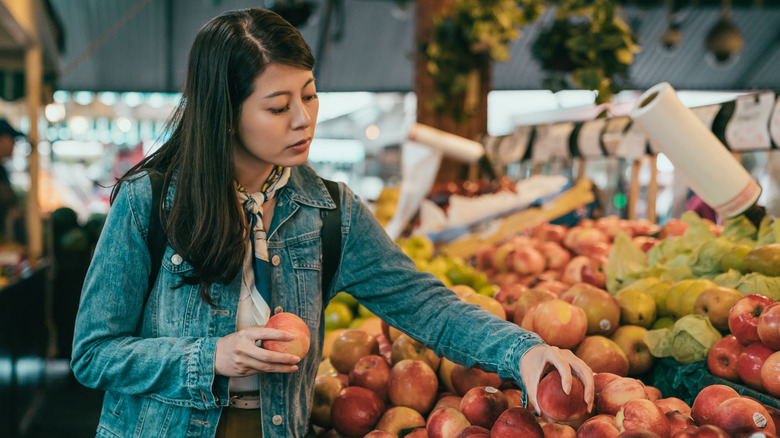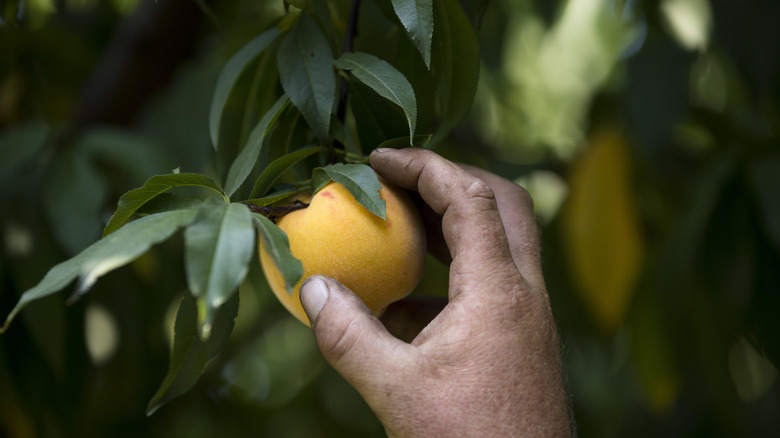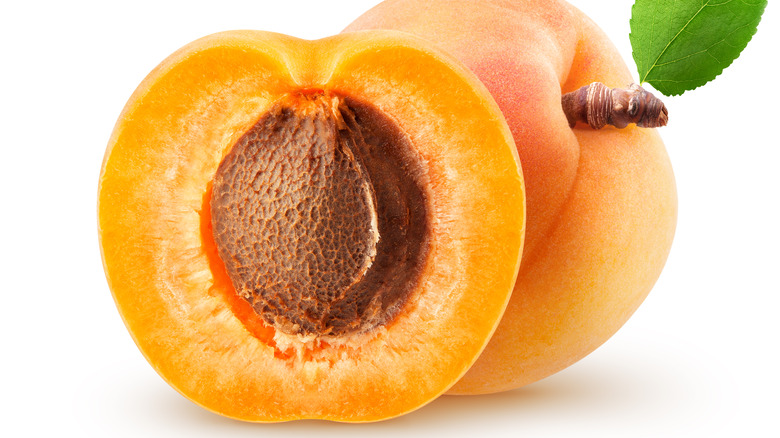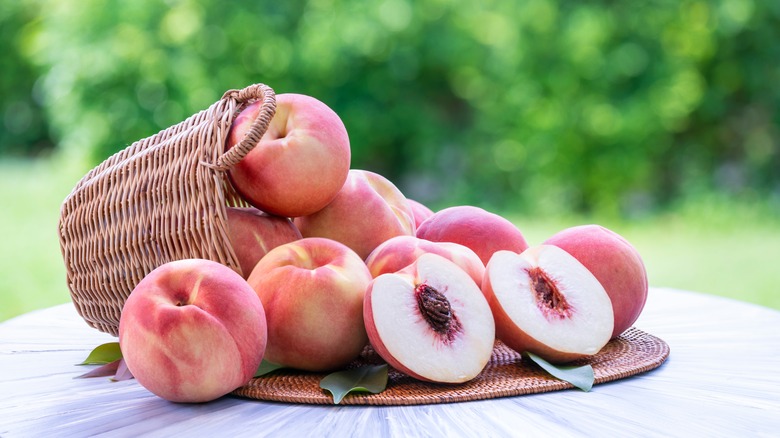The 3 Categories Of Peaches, Explained
China, the motherland of the peach, is still the number one producer in the world, conquering the market by growing a whopping 45% of the world's peaches (via Clemson Cooperative Extension). The United States doesn't even make it into the top three global peach producers, and ironically the state of Georgia (a self-proclaimed peach state) only ranks #3 in the USA. That being said, people love peaches, they are sweet and colorful and can be used for anything. Peaches can go on salad, on pizza, in pies and so much more!
According to Clemson College of Agriculture, peaches are rich with tons of nutritional value, providing vitamins A, B, and C as well as fiber, potassium, and even iron. Varying in size, color, shape, flavor, and even fuzziness, peaches are extremely diverse when it comes to the outside, but what about the inside? Peach pits, better known as stones, are different too, especially in the way that they interact with the flesh of the fruit itself. The different kinds of peach pits define how we categorize the thousands of peach varieties into three categories.
The Clingstone Peach
The clingstone peach gets its name due to the fact that the stone quite literally clings to the surrounding flesh, making it difficult to remove the pit from the fruit, according to MasterClass Articles. But, the effort to peel the stone away is well worth it! Clingstone peaches are known to be much sweeter than freestone peaches and tend to have a melt-in-your-mouth effect.
These bright yellow fruits are the first to be harvested every year at the beginning of summer (May-June) and are difficult to find outside of your local farmer's market or fruit stand (via Peach Truck). It is because they are so soft and sweet that they are hard to find. They bruise easily and are difficult to transport fresh, but they are excellent for jams, jellies, and even peach butter. But, if you're lucky enough to find a local producer, buy a few, and enjoy nibbling the peach down all the way to the pit.
The Freestone Peach
I bet you've guessed how Freestone gets its name! This peach is known for its separation of flesh and pit. If you were to cut this particular peach variety in half, the stone would practically fall out (via MasterClass). Unlike its sister, clingstone, freestone has tougher flesh, making it more widely accessible as fresh fruit in supermarkets and therefore the most common peach to be eaten raw by consumers. Though larger and firmer, freestone doesn't have it all. It is known to be less sweet and juicy, but those characteristics also make it perfect for canning and baking.
So, if you are a pie maker, look to freestone peaches for your next dessert (via Gardening Know How). But, don't use them too quickly, peaches continue to ripen after being picked so feel free to leave them on your counter for a few days until they are ready for consumption. The freestone also has a long harvest period, stretching from May to October making them available to consumers for longer.
Semi-freestone
The semi-freestone peach (AKA the semi-clingstone) is a hybrid of the two above categories. The flesh of a semi-freestone peach is not totally attached to the pit, nor is it completely separate. This makes the semi-freestone versatile, it can be used for canning, baking, or eating fresh (via Gardening Know How). Nectarines (also a type of peach) are often classified as semi-freestone which is why they are so often used as a peach alternative.
The Red Haven peach is the perfect example of a sem-freestone peach. Leafy Place lists Red Haven as having sweet yellow flesh like that of a clingstone but with firm flesh like that of a freestone. In what may be considered the "classic peach" the Red Haven can be eaten fresh, or in fruit salads, but is also perfect for canning. Ultimately, semi-freestones have the best qualities of both of its sister peaches, and it is hard to go wrong with them no matter what your meal plans are.



